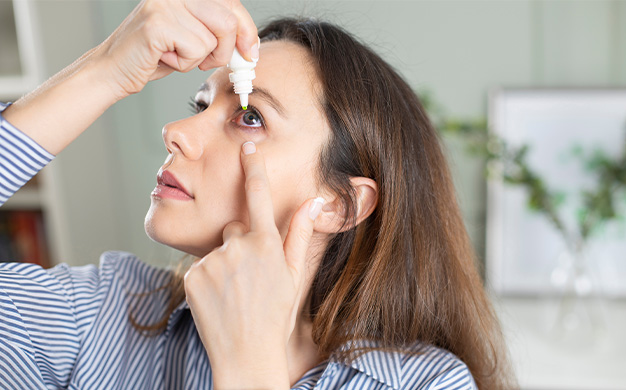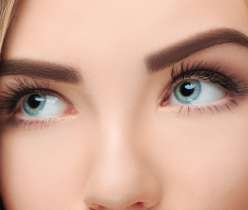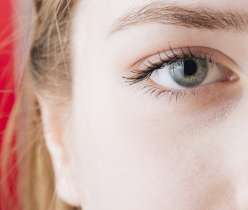Many people suffer from eye allergies, also called allergic conjunctivitis, either seasonal or all year round. They develop when the eyes react to something to allergens that irritates the eye. The common symptoms are burning, itching, redness, puffiness, and eye-watering.
The cause of this allergic disease is exposure to a substance to which an individual has become allergic, known as an allergen. For those affected with seasonal allergic conjunctivitis, these symptoms are part of their hay fever, and the cause is the same.
Grass pollens and pollens from trees, shrubs or weeds land on the eye surface and trigger the release of histamine, a chemical that causes the symptoms. Unlike other conjunctivitis, eye allergies do not spread from one individual to another.
Those dealing with eye allergies develop nasal allergies, with an itchy and stuffy nose. However, it is usually a temporary condition associated with seasonal allergies. You can also get eye allergies from dust, smoke, perfumes, or foods. If you cannot avoid the trigger, your allergies become more severe. You can develop significant itching and burning and even sensitivity to light.
Management of Allergic Eye Disease
Try to identify the cause of the eye allergy or irritation. Avoid contact with pets or materials that triggers an eye allergy. It is best to wear swimming goggles if chlorinated water irritates your eyes. Trying artificial tears 4 to 6 times to soothe the eyes. The first strategy is allergen avoidance, but they must be identified before allergens can be avoided.
In many cases, the Antihistamine eye drops can be extremely effective. Some other types of eye drops are also available to treat eye allergies. Read below about the best allergy eye drops.
Types of Allergy Eye Drops
Allergy eye drops are liquid solutions used to treat symptoms of allergic conjunctivitis. The most common symptoms of eye allergy include:
-
- Red, itchy, or swollen eyes
- Burning or tearing of the eyes
- Sensitivity to light
Your ophthalmologist may first suggest you follow these steps to get rid of an eye allergy:
-
- Use artificial eye tears that you can buy over the counter
- Place a cold cloth on the eyes to provide a cooling effect
- Avoid your allergy triggers.
The type of allergy eye drops one should use depends on the cause of your allergic reaction, your symptoms, and how much the symptoms affect your daily activities.
There are many types of allergy eye drops. Not all are used to treat all allergy symptoms. For example, one that helps you eliminate red eyes may not stop the itching. Some eye drops are sold over the counter. For others, you require an ophthalmologist’s prescription. Some relieve symptoms quickly, while others provide long-term relief.
Here are the five most effective allergy eye drops:
-
- Antihistamine – Ophthalmologist usually recommends antihistamine eye drops for eye allergies. If you have itchy or watery eyes, these eye drops help you feel better. These work by blocking the action of histamine that causes many of your allergy symptoms. These eyedrops can quickly ease your symptoms.
- Anti-inflammatory – These eye drops are divided into nonsteroidal anti-inflammatory drugs (NSAIDs) and corticosteroids. NSAID eye drops help relieve itchy eyes. The itching usually resolves about an hour after using the eye drop. These eyedrops often cause a stinging or burning sensation when first placed in the eyes. Corticosteroid eye drops are effective in treating severe long-term eye allergy symptoms. Prescript eye medication includes loteprednol eye drops.
- Decongestant – These eye drops can reduce eye redness and calms your eyes. They cause the narrowing of blood vessels in the eye area. This helps you get rid of the red, bloodshot appearance of the eyes but is associated with a long-term risk of rebound redness, which makes your eyes permanently bloodshot. As a result, Decongestant eye drops are not recommended for long-term usage. You can get this eye drops without a prescription. But ophthalmologists don’t recommend these drops to treat eye allergies.
- Mast cell stabilizers – These are the newest eye drops that help prevent the release of histamine and other chemicals your body produces during an allergic reaction.
- Multiple-action allergy eye drops – These eye drops contain more than one type of medicine.
Combining antihistamines and decongestants reduces eye itching, redness, and watery eyes. A combination of antihistamine and mast cell stabilizer treats and prevent eye itching, tearing, redness, and burning. Examples of such medications include olopatadine hydrochloride.
Knowing the source of your eye allergies is the best step to treating your eye allergy. An eye care specialist can help recommend allergy shots to prevent severe eye infections. When it comes to mild to moderate allergy symptoms affecting the eyes, the eye drops mentioned above can become an important line of defence in your battle with eye allergy.




